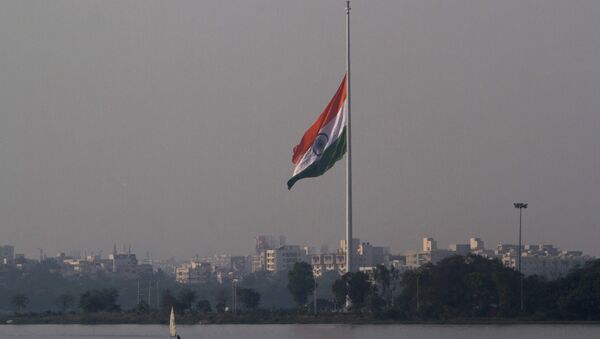New Delhi (Sputnik) — The Indian economy reported a growth rate of 7.2% during the third quarter of the current financial year ending March 2018. This came as a major relief to Prime Minister Narendra Modi, who had come under heavy criticism after growth plummeted to below six percent following his decision to demonetize most of the country's banknotes in November 2016.
"GDP at constant (2011-12) prices in Q3 of 2017-18 is showing a growth rate of 7.2 percent. GDP growth rates for Q1 and Q2 of 2017-18 at constant prices are 5.7 percent and 6.5 percent respectively," Ministry of Statistics & Programme Implementation said in a statement.
India's GDP growth momentum continues strongly & sustainably — jumps to 7.2% in 3rd quarter of 2017-18, makes India the fastest growing large economy in the world. Under leadership of PM @NarendraModi see even stronger economic growth in the future #IndiaonFastTrack
— Piyush Goyal (@PiyushGoyal) February 28, 2018
The average growth in the gross domestic product (GDP) during 2017-18 is estimated at 6.6 percent, as compared to the growth rate of 7.1 percent in 2016-17. The rebound in GDP figures may provide some relief to the Narendra Modi government, which is facing severe criticism over a growing bad debt situation in the banking sector. Government data estimated that over seven percent growth is likely to be achieved in 2017-18 for services like electricity, gas, water supply and financial, real estate and professional services.
READ MORE: Global Index Show India’s Trust in Modi Slipping Slightly Ahead of Election Year
However, growth in agriculture, forestry, and fishing, which employ over half of the country's labor force, would be able to achieve only a 3% growth rate. Another labor-intensive sector like mining and manufacturing is estimated to grow at a rate of 3% and 5.1% respectively. The construction sector which crumbled upon the demonetization move taken by the Prime Minister in November 2016 is expected to grow at a rate of 4.3 %.
With Q3 GDP growth at 7.2%, ave economic growth over first 9 months of 2017-18 is now 6.4%. If Q4 GDP growth is 7.6%, FY18 will end with 6.7% GDP growth--under-performance due to DeMo & GST of around 1%
— Minhaz Merchant (@MinhazMerchant) February 28, 2018
The slow growth rate in the labor-intensive sectors has provided an arsenal to the opposition during the election year, as the ruling Bharatiya Janata Party came to the power in 2014 on the promise of generating at least 20 million jobs every year.



